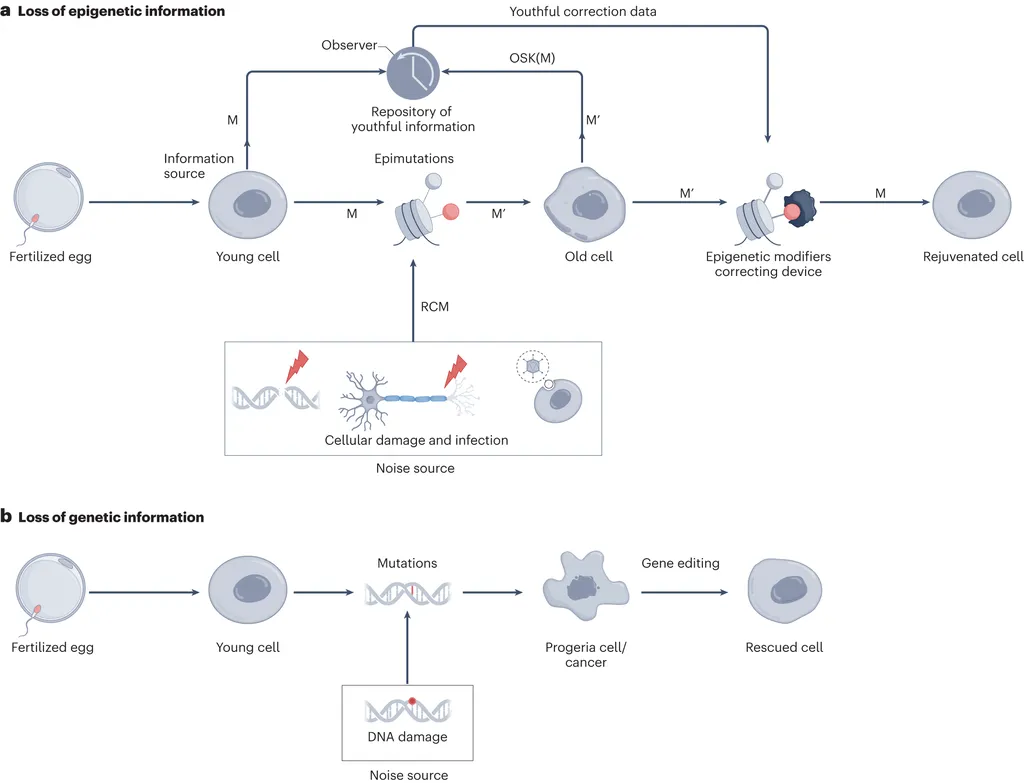In the realm of energy and biological sciences, a team of researchers from the University of Maryland, including Maggie Williams, Emery Doucet, and Sebastian Deffner, has delved into the intricate process of information transcription within cells, shedding light on how aging might be understood through the lens of information theory.
The researchers have developed a model to study the process of information transcription, which is fundamental to cellular function and aging. They employed an abstract concept known as an autonomous Maxwell’s demon (AMD) to interact with two bitstreams, a lifted mass, and a heat reservoir. This model allows them to analyze the steady-state properties of the system, focusing on key aspects such as the statistics of extractable work, bit transcription fidelity, and two-bit mutual information.
In simpler terms, the team is exploring how accurately information is copied and transmitted within cells over time. They found that as the system evolves, the fidelity of information transcription gradually declines, which can be likened to the aging process in cells. This decline in fidelity is influenced by both time-independent and time-dependent transition rates, providing a comprehensive view of the information-theoretic process underlying DNA transcription.
The practical implications of this research for the energy sector are manifold. Understanding the fundamental processes of information transcription and aging at the cellular level can inspire new approaches to energy storage and conversion technologies. For instance, insights into the stochastic nature of cellular processes could lead to more efficient and reliable energy systems that mimic biological resilience and adaptability.
Moreover, the study’s focus on extractable work and mutual information could inform the development of advanced energy materials and devices that optimize energy transfer and minimize losses. By leveraging the principles of information theory, researchers might uncover novel strategies for enhancing the performance and longevity of energy technologies.
This groundbreaking research was published in the journal Physical Review E, contributing to the ongoing dialogue on the intersection of biology, information theory, and energy science. As the energy industry continues to evolve, such interdisciplinary approaches will be crucial in driving innovation and sustainability.
This article is based on research available at arXiv.

